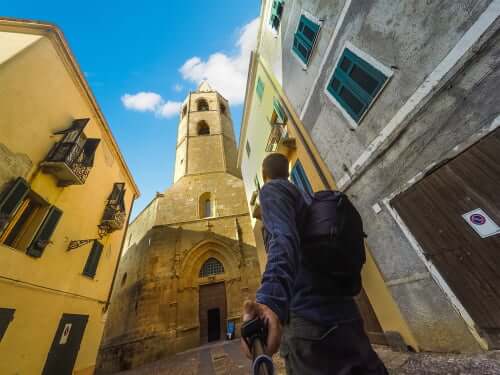Location Information
La Maddalena
La Maddalena
La Maddalena is the largest island of the Maddalena Archipelago of the same name, surrounded by transparent waters with a thousand shades of green and turquoise.
Narrow streets and alleys intersect up to the tourist port of Cala Gavetta between historic buildings, restaurants and boutiques where you can find the best souvenirs and taste the delicacies of the local cuisine.
The largest city on the largest island of the Maddalena Archipelago, La Maddalena is known for its splendid beaches and its natural park. Renting a boat is the best way to explore the surrounding uninhabited islands or simply relax on the golden sand of Spalmatore beach.
The city of La Maddalena, which began to populate around 1770, rises to the south of the main island and faces the town of Palau.
Must-see attractions in La Maddalena
Church of Maria Maddalena
This is the main church of the island, an example of the Romanesque style. The structure of the church was conceived, starting from 1205. And since then, it has undergone several remodeling works over the centuries.
In 1952, the church was remodeled and enlarged; following these works, the original neoclassical façade was demolished, replaced by a “Mediterranean” style facade designed by the architect Antonio Simon Mossa, and the nave elongated with the addition of a span. The stucco decorations and frescoes inside were also eliminated. In 1993 the façade of the Mossa was demolished, replaced by the current façade, built on the model of the original one based on a design by the Maddalenino architect Pierluigi Cianchetti.
There is a historical curiosity concerning the building and the events of the English admiral Horatio Nelson. Many times he sailed the waters of La Maddalena with his fleet to control the French ships. During one of his last stops in the archipelago, as a sign of gratitude for the hospitality received, he gave a silver cross and two candlesticks.
Maria Pia Beach Cala Spalmatore Beach
Two promontories protect this beach from the winds and so the waters are calm and the seabed slopes gently. The beach is suitable for families with children. Also not to be missed is Cala Francese, a promontory located in the south of the island. The coast offers particularly suggestive deep inlets. Nearby, there is also a disused granite quarry, which over the years has also been used for works outside the island.
Bassa Trinita Beach
The structure of the beach is wild, with a 128-meter-high rock spur and three small granite coves connected to each other, two very small and the other larger.
Describing the beauty of this place is very difficult, white and thin sand, dense Mediterranean vegetation, colorful and fragrant.
For this reason, the beach of Bassa Trinita is a must see. The fine white sand, the dunes, the turquoise sea and the granite rocks that seem to embrace it make this beach a real paradise on earth. The beautiful crystalline sea and the shallow and sandy seabed make it one of the most popular destinations in Sardinia. The Bassa Trinità beach is part of the larger Cala Maiore where in all there are 3 amazing coves, all bordered by the Mediterranean scrub and connected to each other.
The view is also splendid: the beach overlooks the islands of Spargi, Budelli and Santa Maria, the smaller islands of the archipelago.
Gallery


